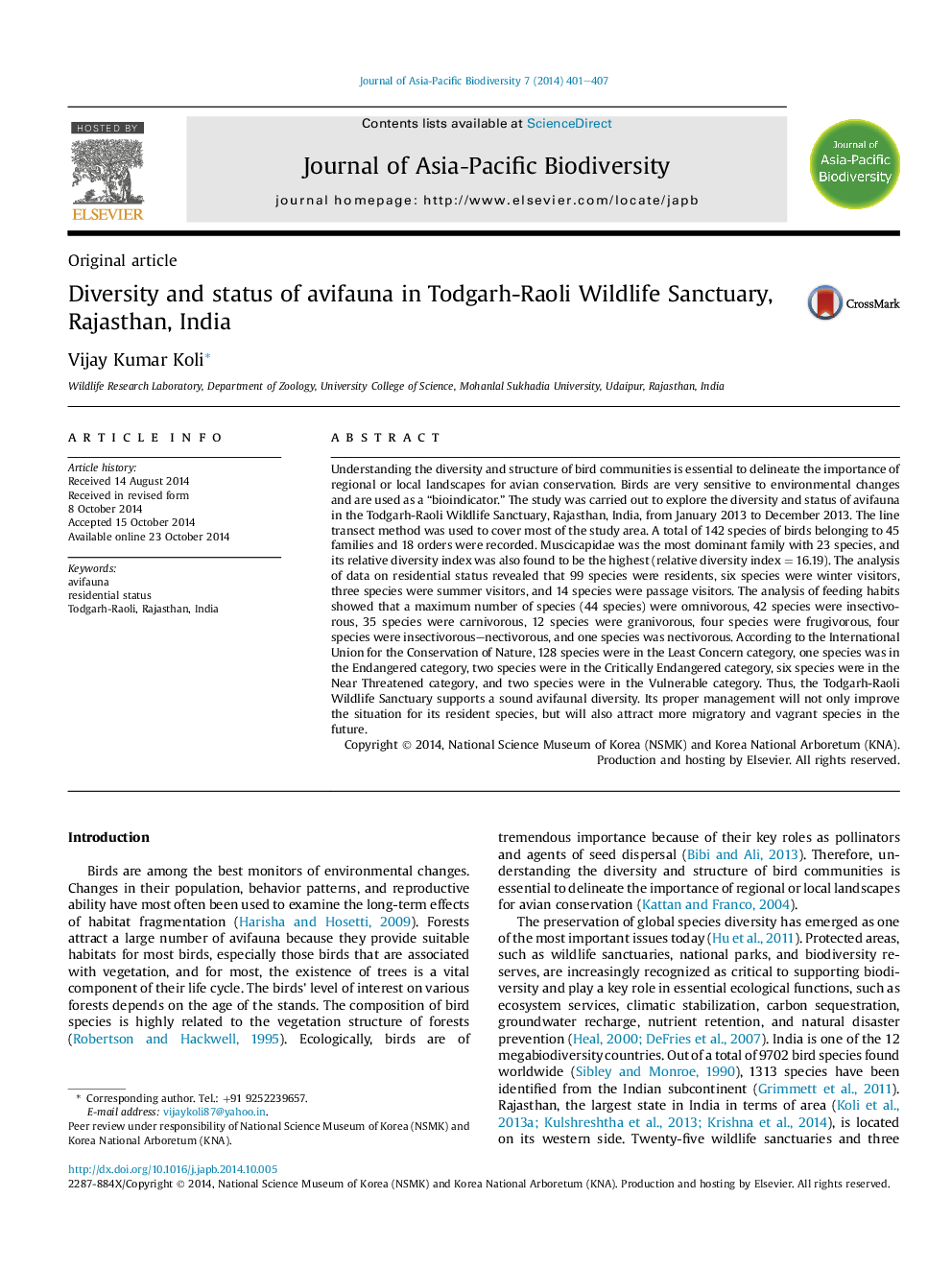| Article ID | Journal | Published Year | Pages | File Type |
|---|---|---|---|---|
| 4395122 | Journal of Asia-Pacific Biodiversity | 2014 | 7 Pages |
Understanding the diversity and structure of bird communities is essential to delineate the importance of regional or local landscapes for avian conservation. Birds are very sensitive to environmental changes and are used as a “bioindicator.” The study was carried out to explore the diversity and status of avifauna in the Todgarh-Raoli Wildlife Sanctuary, Rajasthan, India, from January 2013 to December 2013. The line transect method was used to cover most of the study area. A total of 142 species of birds belonging to 45 families and 18 orders were recorded. Muscicapidae was the most dominant family with 23 species, and its relative diversity index was also found to be the highest (relative diversity index = 16.19). The analysis of data on residential status revealed that 99 species were residents, six species were winter visitors, three species were summer visitors, and 14 species were passage visitors. The analysis of feeding habits showed that a maximum number of species (44 species) were omnivorous, 42 species were insectivorous, 35 species were carnivorous, 12 species were granivorous, four species were frugivorous, four species were insectivorous–nectivorous, and one species was nectivorous. According to the International Union for the Conservation of Nature, 128 species were in the Least Concern category, one species was in the Endangered category, two species were in the Critically Endangered category, six species were in the Near Threatened category, and two species were in the Vulnerable category. Thus, the Todgarh-Raoli Wildlife Sanctuary supports a sound avifaunal diversity. Its proper management will not only improve the situation for its resident species, but will also attract more migratory and vagrant species in the future.
